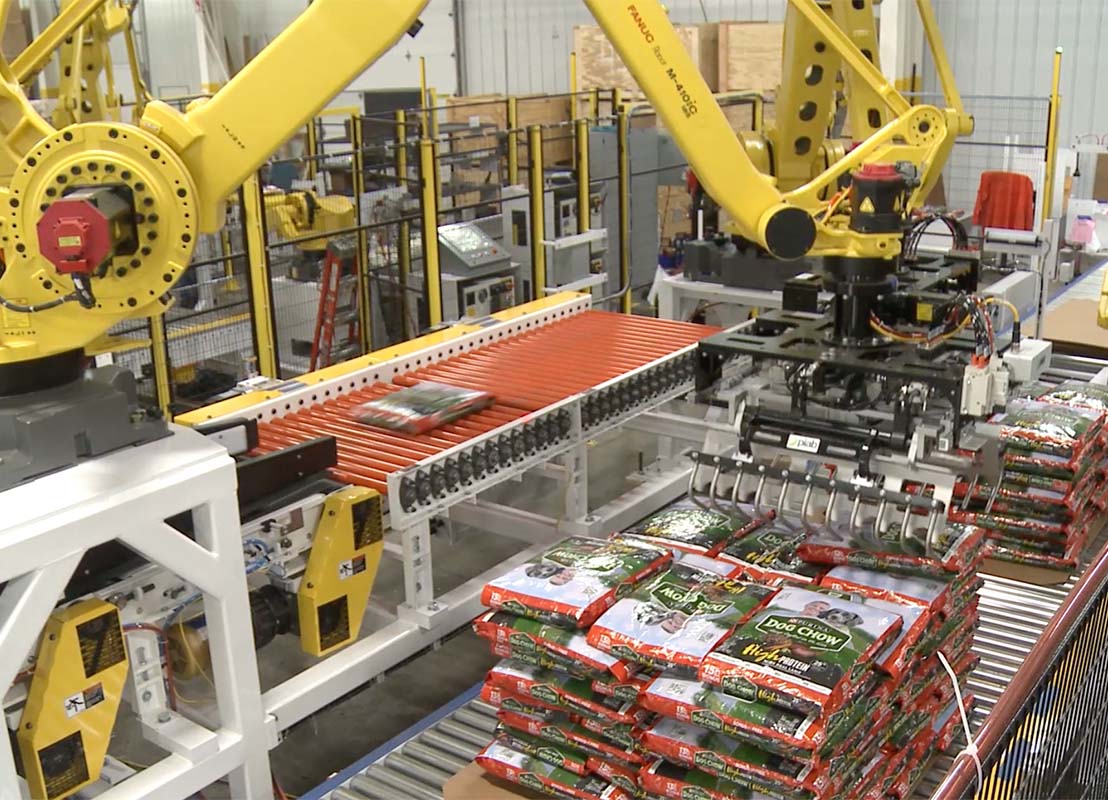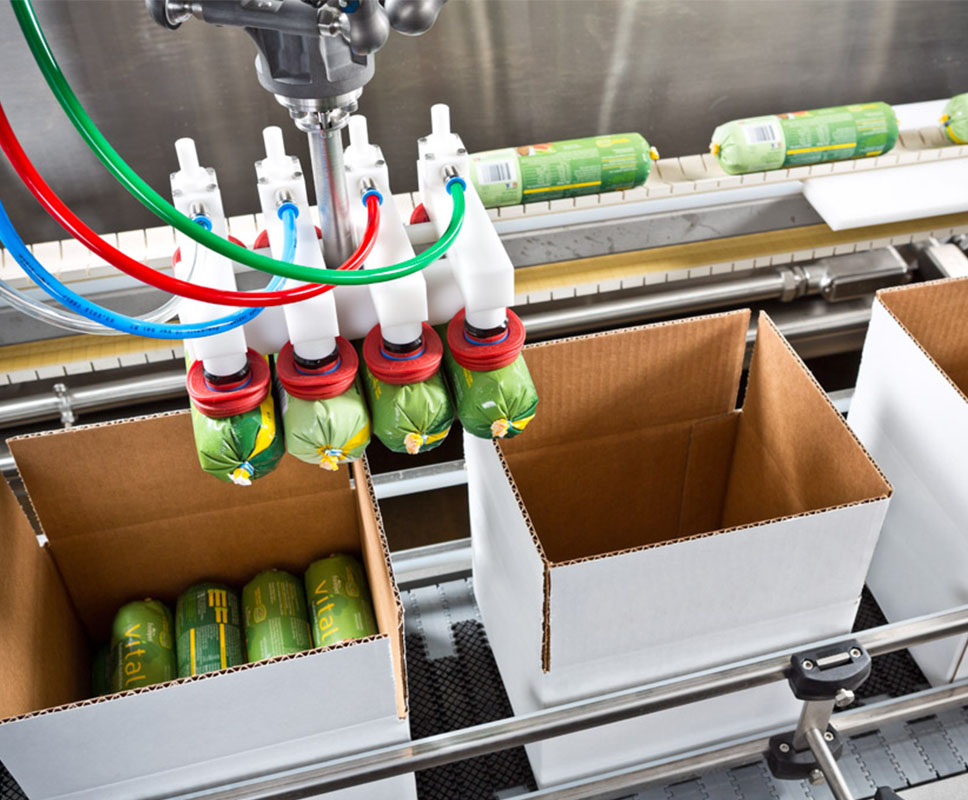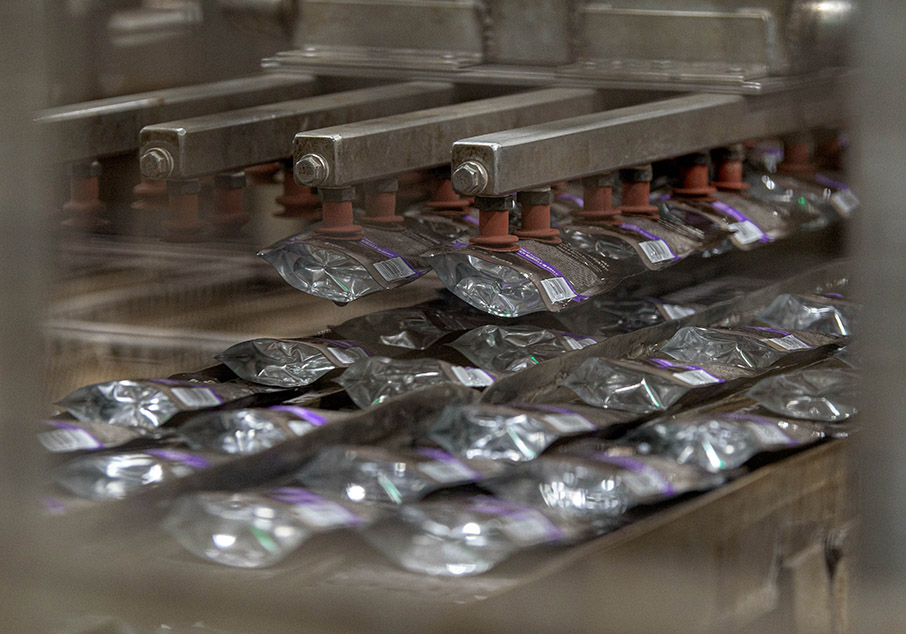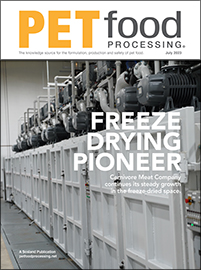This article was published in the July 2023 issue of Pet Food Processing. Read it and other articles from this issue in our July digital edition.
In the face of persistent labor shortages in processing plants, pet food processors are finding themselves at a crossroads. Traditional methods of operation are proving increasingly unsustainable, prompting a shift toward more innovative solutions. Foremost among these is automation, a technological advancement that promises to revolutionize the industry. By automating various aspects of the production process, pet food processors can ensure a smooth and efficient flow of operations, effectively addressing the challenges posed by the current labor market.
Automation solutions
Over the past several years, equipment manufacturers have developed automation solutions tailored to the pet food industry. These technologies offer a wide range of benefits, including increased efficiency, improved safety and enhanced quality control. Lexington, Ky.-based Gray Solutions is one example of an equipment provider offering automated solutions for pet food processors. Its state-of-the-art technologies allow for the automation of all areas of the manufacturing process, from start to finish.
“We automate all aspects of the pet food manufacturing process, from the receipt and delivery of raw materials to the process manufacturing lines through packaging and even the loading of finished goods onto trucks,” said Dean Elkins, senior director of advanced automation, Gray Solutions. “Efficiency gains have been realized through the implementation and monitoring of process controls and manufacturing data, automated in-process testing and inspection procedures, data collection and analytics, track and trace requirements, and flexible automation that augments manpower while meeting food and industrial safety standards.”

Robotics have become more common within pet food manufacturers’ end-of-line packaging operations.
|NorthWind Technical Services, Sabetha, Kan., is another automation supplier that provides equipment specifically suited for the pet food industry. With innovative solutions designed to improve plant performance and efficiency, NorthWind helps processors automate the entire production line, from raw material input to product output.
“NorthWind provides custom automation solutions for all processes in pet food production from receiving raw materials through finished product,” explained Ryan Grier, account manager, NorthWind Technical Services. “Our Recipe Management & Reporting Software, BatchLOGIX®, is a robust tool that provides a great solution for manufacturers looking for a flexible system with the ability to handle both their batching and continuous processes. With the added functionality of including both ingredient and process setpoint in recipe design and tracking lot numbers throughout the entire process, BatchLOGIX is essential for maximum plant performance.”
Integration with existing systems
One of the key components of successful automation implementation is integration with existing systems. This means that equipment manufacturers need to be able to work closely with processors in order to develop and integrate the right solutions. In this regard, Gray Solutions and NorthWind both have extensive experience working with pet food processors to get the right systems in place.
“The integration of existing systems and new automation solutions is a key aspect of the modernization journey,” said Scott Howard, Gray Solutions.
“The integration of existing systems and new automation solutions is a key aspect of the modernization journey,” said Scott Howard, vice president of digital solutions, Gray Solutions. “At Gray Solutions, we partner with customers to perform a detailed and thorough front-end assessment of the existing system capabilities and technologies and to define the integration requirements as one of the initial project deliverables. During this assessment, many factors are taken under consideration, such as the level of integration needed, compatibility of the existing systems, data exchange requirements, and robustness and redundancy needs. Most automation solutions are required to integrate with existing systems and are often designed around the latest Ethernet-based communication protocols and layered architectures with key emphasis on robustness, capacity and security.”
“A benefit of working with NorthWind is that we are system integrators and offer fully integrated automation systems to fit our customers’ needs,” Grier said. “Our team, with diverse educational backgrounds, has experience not only integrating with existing control systems, but with ERP systems, scheduling systems and other existing business planning software. When integrating with an ERP system or adding control of a new process, our team communicates directly with plant personnel to ensure minimal downtime on a schedule that works with their production schedule.”
Safety and hygiene compliance
Another key aspect of automation in the pet food industry is the need to meet safety and hygiene standards. Automation solutions must be able to meet these requirements while still allowing for flexibility and agility in production. Sterling Systems & Controls, Sterling, Ill., a company with over 50 years of experience in providing automation, batching, process and systems solutions, understands the challenges and importance of meeting these standards.
“The Sterling Systems & Controls process control and automation systems will take into consideration all customer standards and any government regulatory requirements,” said Joe Lewis, marketing, Sterling Systems & Controls. “Maintaining electrical safety is critical and we comply with customer dictated area ratings for the location of electrical equipment. In addition, Sterling Systems’ material ingredient batching and control systems incorporate the latest in ingredient lot tracking and traceability, as well as batch validation capability, to ensure safety and quality in every ingredient and batched set of ingredients for making the end product.”
Grier also emphasized the critical role of safety and hygiene compliance in pet food automation, underscoring NorthWind’s meticulous approach throughout the design, fabrication and installation stages.

Automation in processing facilities can help with the growing labor shortage in manufacturing.
|“Safety standards are prioritized at the highest level of importance and start in the early stages of project development, during the panel design process,” he said. “From an electrical standpoint, our design team follows industry recognized control panel design procedures to ensure efficient panel layout, circuit analysis and code compliance during the panel design process. We also provide various NEMA (National Electrical Manufacturers Association) rated panels that are washdown rated to meet specific hygiene requirements.”
This dedication to safety and reliability of automation systems from the earliest stages of development is a sentiment echoed by Gray Solutions. The company’s shared commitment to these principles exemplifies the industry’s collective drive toward creating safer, more efficient and more reliable automation systems for pet food processing.
“As part of our approach in the early stages of the initial requirements gathering phase, we engage our SMEs (subject matter experts) to ensure we evaluate the safety and hygiene aspects with GFSI (Global Food Safety Initiative) standards in mind,” Howard said. “Areas of focus would range from compliance with regulations, risk assessments, sanitary design, HACCP principles, track and trace requirements, and overall quality control and testing. Food safety is a core aspect of what we focus on to ensure the solutions we provide and implement hold up to today’s food safety standards.”
The future of automation
Looking ahead, the transformative potential of automation within the pet food industry is undeniable. As manufacturers relentlessly innovate and adapt to the industry’s ever-changing demands and challenges, automation technologies are set to assume an increasingly central role. Increased efficiency, improved productivity, greater flexibility and scalability, and integration with data analytics are just some of the key benefits that these technologies can provide. With this in mind, it’s imperative that companies understand the importance of investing in reliable automation solutions to remain competitive and maximize their resources.
“As manufacturing companies continue to look for ways to build new or modernize existing facilities, automation technologies will continue to play a huge role in this journey,” said Scott Howard, Gray Solutions.
“As manufacturing companies continue to look for ways to build new or modernize existing facilities, automation technologies will continue to play a huge role in this journey,” Howard said. “Automation technologies are evolving every day and we don’t see that changing. We see these technologies continuing to adapt and grow in many areas including enhanced efficiency and productivity, flexibility and scalable solutions, increased integration with Data Analytics and AI, continued focus on the dynamics of traceability and quality assurance, overall food safety and sustainable design practices, and increasing use cases for Collaborative Robotic (COBOT) integration.”
Pet food processors understand the benefits that incorporating automation into operations can provide.
Barrett Petfood Innovations, Brainerd, Minn., designed its new freeze-dried pet food facility in Little Falls, Minn., with “efficiency and innovation” in mind, according to Tom Barrett, partner and vice president business development and purchasing. And that meant more automation.
“I think our industry is definitely behind the eight ball on using automation to its fullest ability,” Barrett said. “That’s something that we are trying to really push forward, obviously on the packaging side, but also in other areas of our operations.”

Simmons Pet Food incorporated a variety of automation into its Emporia, Kan., plant expansion — not to eliminate workers, but to increase operational efficiency.
|Simmons Pet Food incorporated more automation into the expansion of its Emporia, Kan., and Dubuque, Iowa, facilities to help ease the effects of the labor shortages. However, the new automation did not result in any employee layoffs — it simply added productivity and efficiencies to the operations, explained Scott Salmon, president of Simmons Pet Food.
“We’ve invested quite a bit in automation,” Salmon said. “However, we were able to do that as we grew, so it didn’t drive any employee cuts or layoffs. Most of our automation is just now getting into place.
“We put a lot of focus on automation in packaging in our Flex plant, our main plant [in Emporia], and in our Edgerton, Kan., [distribution] plant,” he added.
In addition to the packaging side of pet food processing, another area experiencing significant advancements due to automation is material weighing and ingredient batching, and this is likely to continue in the future.
“In particular, material weighing and ingredient batching will require more speed and capacity to meet the growing production demands,” Lewis said. “This occurs using multiple scales in batching systems and efficient, modern controls using non-proprietary hardware and experienced personnel, not contractors. Sterling Systems & Controls does not use contract people — we employ a growing team of mechanical, electrical and software engineers, as well as systems project managers, to meet the growing objectives of all our customers.”
In the face of these advancements, it’s important to note the real-world implications of automation technologies, particularly in addressing one of the industry’s most pressing challenges: labor shortages. The pet food industry, much like the broader food industry, is grappling with a significant shortage of workers. This shortfall can lead to missed opportunities and lost time due to understaffed operations, impacting the return on investment. However, the advent of automation technologies, including robotics and artificial intelligence, is providing a viable solution.
“The pet food industry, like the general food industry, is struggling to find workers,” said Craig Souser, JLS Automation.
“The pet food industry, like the general food industry, is struggling to find workers,” said Craig Souser, president, JLS Automation, York, Pa. “The ROI calculation often needs to include lost opportunities or lost time due to understaffed operations. Robots show up to work every day. In addition, gripper, vision and AI developments are all enabling applications to be addressed that simply were not possible in the past or were prohibitively expensive.”
But automation doesn’t necessarily mean labor reduction — it often means a redistribution of labor.
“Typically, labor which has been replaced by automation is relocated to other areas within the plant,” said Nick Szczechowski, regional sales manager for Brenton, a ProMach brand based in Alexandria, Minn. “For example, those operators on the line become more skilled employees through training to run the new automation systems. They become more valuable to their organization, and their earning power increases — it’s really a win-win situation for all involved.”
Read more about pet food and treat processing on our Operations page.


